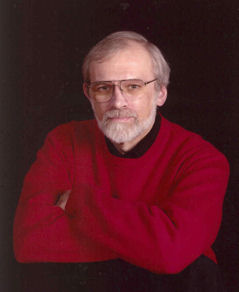You may be aware of NARP, the National Association of Rail Passengers, and MARP, its Michigan sister; you may even be a member. If you're not, you may want to take a look at NARP's latest newsletter on-line. In addition to news, there's some interesting analysis. I'll hit the high points here.
Politics
Do Republicans always oppose public transit and rail spending? No. It's pretty well known that outgoing California Governer Arnold Schwartzenegger actively encouraged California's high speed rail initiative, branded "Fly California", as well as many other environmentally conscious policies. NARP's newsletter details the efforts of Virginia's Republican governor Bob McDonnell to increase rail service in his state. The results are a model for working cooperatively with the freight railroads that own the tracks, increasing frequency, and investing state funds in projects that benefit both freight and passenger traffic. As a business-savvy politician, McDonnell knows that "investment" is more than a nice word for government boondoggles. His state budget has called for deep cuts, but not in transportation infrastructure, in which he plans to invest $4 billion. An interesting funding source for infrastructure is Virginia's 10% tax on car rentals, of which 30% is used for rail and conventional transit.
Further south, in Florida, Republican Governor Rick Scott has yet either to support or block the Tampa-Orlando high speed line. But the project is pretty hard to object to: most of the capital cost is covered by Federal funds, while the operating costs and risks will be covered by private companies, of which seven are bidding to operate the line. What's more, Associated Industries of Florida, a business lobbying group, is strongly in support of the project. Perhaps the only negative factor is the association between high speed rail and President Barak Obama, and the fear some politicians have of being linked to anything the opposing party favors.
Analysis
Some very interesting facts emerge in a white paper by NARP Communications Director Sean Jeans-Gail. He puts together figures from several sources that show the costs and benefits of rail transportation and compares them with the costs and benefits of highway funding. Here are some of the most significant:
- Amtrak recovers around 75% of its operating costs from generated revenues;
- U.S. commuter rail, on average, nationwide, covers 53% of it’s operating costs through the fare box;
- Gas taxes, road tolls, and vehicle registration fees covered 51% of the cost of America's highways in 2008;
- The average US household spends 15% of its resources on transportation, of which 94% goes to supporting its automobiles;
- Families that use public transportation as an alternative to an additional auto save about $9000 each year (a figure I've often brought to your attention!).
Do Americans actually use rail as a meaningful transportation option? Between 1995 and 2008:
- US population grew 15%
- Highway use rose by 21%
- Commuter rail ridership grew 28%
- Public transit ridership went up 31%
- Amtrak ridership grew 32%
Another source of information and analysis - perhaps better known to many of you - is the Texas Transportaiton Institute. These researchers have for many years been the primary non-governmental source of information on traffic nation-wide. Their primary focus is on roads and highways, and they do a great job with it. Their annual report came out last week - a feast for those who like to dive into the numbers and fish out their own conclusions. Congestion is one of their main focuses, and the amount of time and money lost to congestion is truly staggering. For each commuter in a major metropolitan area...
- Average time lost to congestion: 50 hours each year, reaching as high as 70 hours in the worst areas, Chicago and Washington DC;
- Gallons of gas wasted: 39 on average, 57 in Washington DC;
- Money wasted: $1,166, and as high as $1,738 in Chicagoland.
The trend has been steadily upward: in 1982, the average commuter lost only 18 hours each year to congestion.
City-by-city numbers are available, so I looked at the numbers for the Detroit metro area. The good news: congestion is decreasing around here...but of course, we know why: the population is shrinking. So we're back to where we (Wake up Washtenaw) started: how do we make our region more attractive to people and businesses?
I think the figures here might give us a clue.
To read more:
- NARP News, January 2011: http://www.narprail.org/cms/images/uploads/1101web.htm
- NARP's "Transportation Infrastructure Investment - White Paper & Fact Sheet" www.bit.ly/travchoice
- Texas Transportation Institute Urban Mobility Information: http://mobility.tamu.edu/




